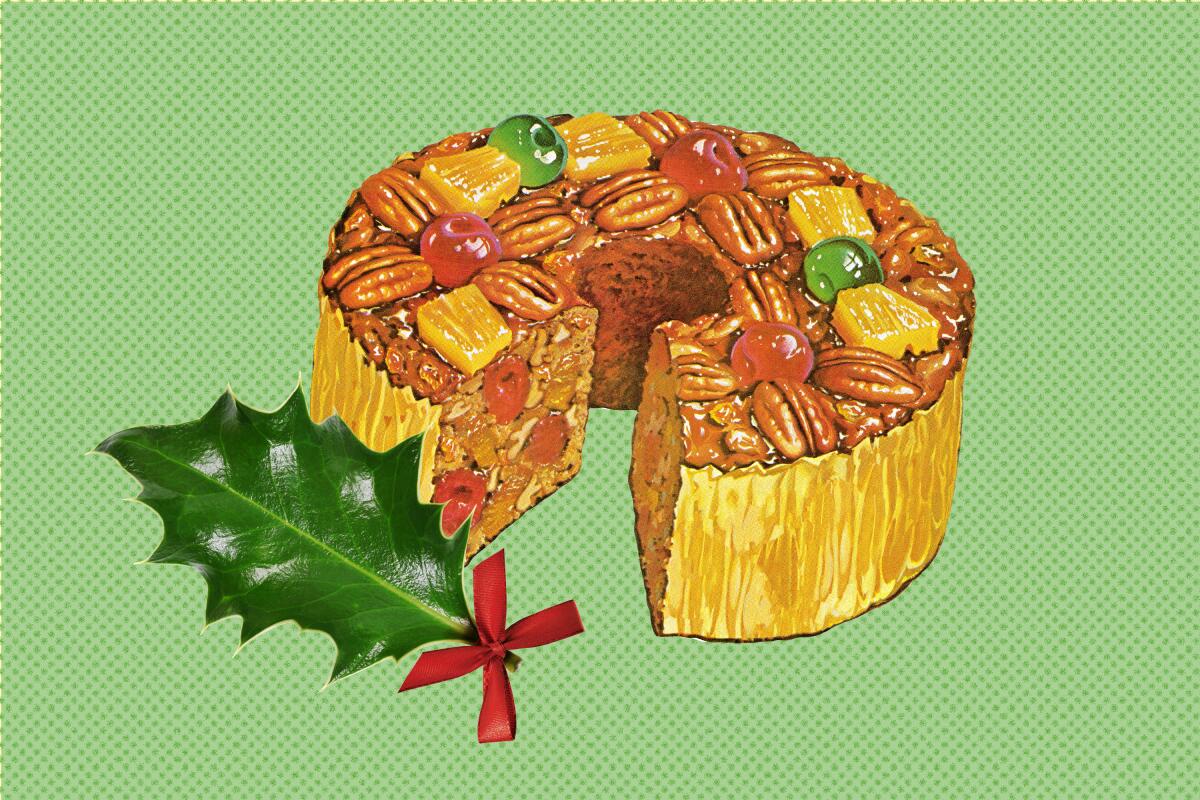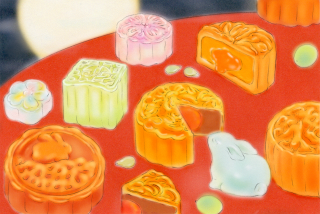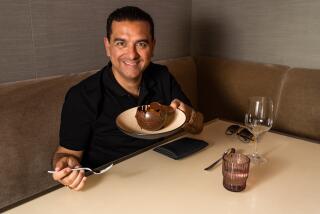Happy holidays! Here’s a rundown of six fruitcakes

My family has a holiday custom that involves a fruitcake. A very old fruitcake.
Since 1992, our family and another family we’re close to, the Fishers, have passed an old English fruitcake purchased from Harrods department store back and forth during the holidays. Most every season it shows up, like the cat that keeps coming back, on someone’s doorstep or hidden in with a pile of actual, desirable presents. What was originally intended to be a funny one-off, white elephant-esque prank has become one of our most beloved traditions.
The fruitcake can essentially be thought of as the world’s first PowerBar, according to Smithsonian Magazine. It originated in the Middle Ages and served as a fantastic way to celebrate the bounty of the past year: nuts, dried fruits and, of course, plenty of booze. From Chilean pan de pascua to Indian Allahabadi cake and Italian panettone, countries around the world have fruited cakes to commemorate the holidays and the seasons’ passage into winter. Immigrants brought those traditions here, but at some point the dessert started to experience a fall from grace.
When and why did America turn on fruitcake?
According to some, it was because of Johnny Carson, the powerful late-night talk-show host watched by millions until he retired in 1992. The famous joke, attributed to Carson, as well as humorist Calvin Trillin, is that “there is only one fruitcake in the world and people keep sending it to each other.” Carson ran a segment in 1989 that showed a fruitcake being subjected to every manner of torture and abuse, failing to create even the slightest dent. As a kid, I found it the height of hilarity.
But now I’m feeling a little sorry for fruitcake. Relentlessly bullied, victimized with cruel nicknames (a doorstop, a paperweight) and serving as the butt of endless jokes, the fruitcake has been punished enough. It’s long past time to ease up and give the ancient confection its due. Here’s a highly selective rundown of six commercially available fruitcakes from around the country:
Trappist Abbey Bakery
Carlton, Ore.
trappistbakery.com
Deep in the lush majesty of Oregon’s Willamette Valley, a small community of Trappist monks of Our Lady of Guadalupe live a quiet life of asceticism. They bind books, keep a wine warehouse and, of course, bake fruitcakes.
The flavor? Well hello, pineapple! The tropical fruit is the overwhelming theme of this particular cake, dotted with whole pecans and Luxardo-like cherries. The texture is appealing, alternating between the soft, crystalline chewiness of candied fruit and the crunch of nuts. But the pineapple flavor, while distinctive, makes this a little one-note.
Beatrice Bakery
Beatrice, Neb.
beatricebakery.com
I’ll give this to the Beatrice Bakery: It makes one boozy block of cake (say that five times fast). Grandma’s Fruitcake, as they call it, dates back to when two German immigrant brothers discovered their grandmother’s old recipe in 1917. The cake, which lacks citrus peel, a common ingredient in many fruitcakes, makes up for it with a triumvirate of spirits: brandy, rum and bourbon.
It’s certainly the most alcohol-forward of the cakes I tried, and that, frankly, is what we all could use during this time of year. And while I thought the texture could have been a little firmer, this is a good option.
Claxton Bakery
Claxton, Ga.
claxtonfruitcake.com
This one wasn’t bad, but coming from a town that proclaims itself the Fruitcake Capital of the World, I expected a tiny bit better. The Claxton Bakery, which dates to 1910, makes a fruitcake that’s a bit more citrus-heavy than some of the others I tried. I didn’t mind that, but I did mind the doughy texture, which reminded me of a log of Pillsbury cookies, and vaguely industrial aftertaste.
Jane Parker
Astoria, N.Y.
janeparker.com
This dark fruitcake was my overall winner. The Jane Parker brand, originally part of the Great Atlantic and Pacific Tea Company (A&P), began producing fruitcakes in the 1930s. The brand was nearly lost forever in 2014, according to the website, when the company filed for bankruptcy, but was rescued a few years ago when brothers Chris and Alex Ronacher purchased the rights to the cake and revived it.
Made with molasses and brown sugar, this cake is a little earthier and, well, cakier than some of the others, and does a good job balancing the citrus flavors, which dominated the Claxton fruitcake. This one tastes a bit sweeter than the rest, which might be due to what seemed to be a heavier-than-normal reliance on glacé cherries.
Collin Street Bakery
Corsicana, Texas
collinstreet.com
Rimmed with pecans, this cute, ring-shaped fruitcake from a small town on the I-45 south of Dallas is another good choice. Collin Street, established in 1896, is said to have achieved fame when John Ringling (of circus renown) tried and liked the cake so much he had it sent to family and friends internationally.
The Collin Street fruitcakes are less about fruit and more about nuts — after one bite of cake, it makes immediate sense that the first ingredient listed on these is pecans. (It’s from Texas, after all.) The cake has a crumblier, meatier texture than you might be expecting; it might not be your first choice if you miss all the little sugary fruits, but it’s perfect if you’re a nut fan.
Gourmet Gifts
Wauwatosa, Wis.
delectablefruitcake.com
I was unable to determine what entity actually bakes these cakes — only that they’re made for a Wauwatosa-based company called Gourmet Gifts. (A call to the company and message sent through their website yielded no information.) But I will hand it to the bakers: The cakes are pretty decent. Buttery and walnut-heavy, there’s something of a banana bread feel to it, minus the actual banana.
There’s not anything in particular that sets this cake apart, but I certainly wouldn’t turn down a piece with a cup of coffee.
More to Read
Eat your way across L.A.
Get our weekly Tasting Notes newsletter for reviews, news and more.
You may occasionally receive promotional content from the Los Angeles Times.










